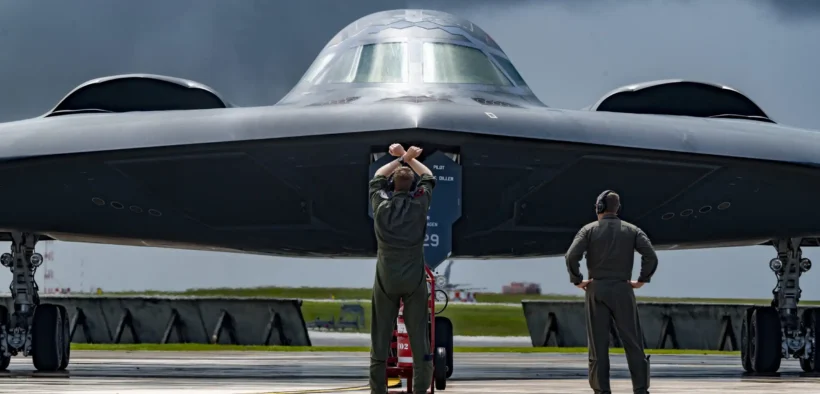Everything You Need to Know About Operation “Midnight Hammer”
Share

The United States has carried out a major airstrike, codenamed Operation Midnight Hammer, targeting key Iranian nuclear facilities in one of the most technologically sophisticated military operations in recent memory.
The operation, which unfolded between June 21 and 22, 2025, involved seven U.S. Air Force B-2 Spirit stealth bombers that departed from Whiteman Air Force Base in Missouri.
The bombers, supported by more than 100 aircraft, including aerial refuelers, fighter jets, and electronic warfare planes, undertook an 18-hour journey to deliver their payload to targets in Fordow, Natanz, and Isfahan, sites long suspected of housing Iran’s underground nuclear enrichment infrastructure.
For the first time in combat, the U.S. deployed 14 GBU-57 Massive Ordnance Penetrators, the so-called “bunker-buster” bombs, designed to destroy heavily fortified underground facilities.
The bombers released their payloads within a tightly coordinated 25-minute window before exiting Iranian airspace without reported resistance or interception.
The operation also included the launch of Tomahawk cruise missiles from a U.S. Navy submarine, further complicating Iran’s ability to detect or defend against the strike.
Deception tactics, such as sending some bombers on a Pacific route while others crossed the Atlantic, were employed to maximize the element of surprise.
Pentagon officials, including Defense Secretary Pete Hegseth, described the operation as “bold and brilliant,” emphasizing its precision and the message it sends regarding U.S. military capabilities and willingness to act. “This was a necessary and carefully calculated mission,” Hegseth stated during a press briefing.
General Dan Caine, Chairman of the Joint Chiefs of Staff, noted that the mission was one of the longest B-2 sorties in history, second only to those flown after the September 11 attacks.
The strike comes amid escalating tensions over Iran’s nuclear ambitions and follows weeks of warnings from U.S. officials about possible military action should diplomacy fail. While Iran has yet to issue a direct military response, U.S. forces across the region remain on heightened alert for potential reprisals by Iranian proxies or missile attacks.
Strategic analysts say Operation Midnight Hammer was not only intended to degrade Iran’s nuclear program but also to signal the reach and resolve of the United States in enforcing its red lines on nuclear proliferation.
International reaction has been swift, with U.S. allies expressing support for the mission’s objectives, while other governments have called for restraint to avoid a broader conflict in the region.
As the world awaits Tehran’s next move, Operation Midnight Hammer stands as a stark reminder of the evolving nature of modern warfare—where stealth, technology, and rapid execution can alter the balance of power in a matter of hours


















